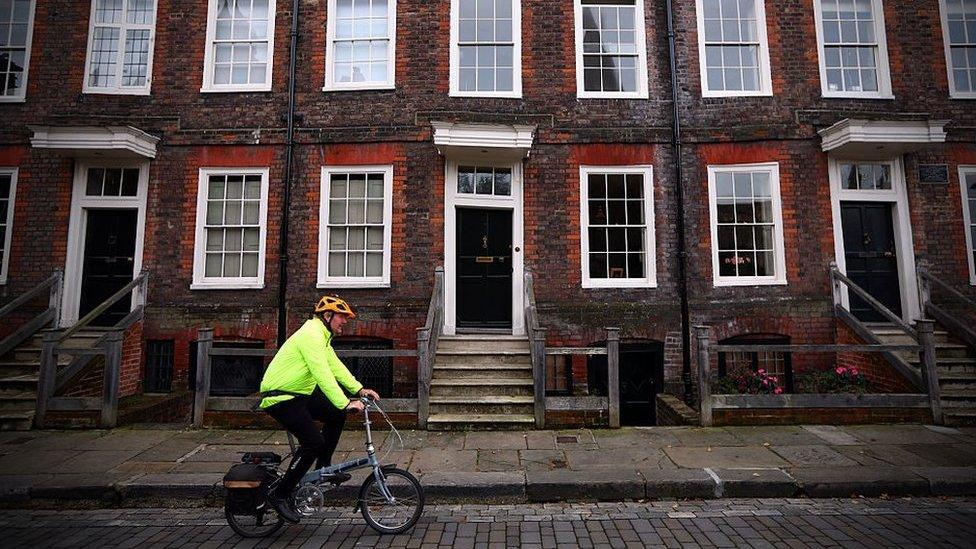National house price gap widens
- Published

Homes in Rochester, Kent, where house prices have been rising faster than much of the UK
House prices have risen significantly in England in the past year in contrast to the rest of the UK, figures suggest.
Prices rose by 8.6% in England in the year to the end of January, the Office for National Statistics (ONS) said. , external
In comparison, property prices went up by 0.1% in Scotland and 0.8% in Northern Ireland, and fell by 0.3% in Wales, over the same period.
Various surveys have suggested a pick-up in UK house prices after last summer's lull.
The ONS said that property price rises in England were driven by an annual increase in the South East of England (up 11.7%), London (up 10.8%) and the East of England (up 9.8%). Excluding London and the South East, UK house prices increased by 5.1% in the 12 months to the end of January.
Mark Posniak, managing director at Dragonfly Property Finance, said "England, Wales, Scotland and Northern Ireland may be geographical neighbours but they could be thousands of miles apart in terms of house prices.
"London will remain a formidable bastion of the UK's property market but for many its prices are an insurmountable obstacle. With interest rates unlikely to rise this year and the employment market as strong as it is, demand will remain."
Average UK house prices increased by 0.9% from December to January, with the average home now valued at £292,000.
Campbell Robb, chief executive of housing charity Shelter, said: "Last week's Budget brought no hope for ordinary people looking for a place, to rent or buy, to call home that they can actually afford. It's time for the government to get serious, and invest in the genuinely affordable homes that we desperately need."
Chancellor George Osborne did announce the creation of a Lifetime Isa for those under 40 in April 2017. They will be able to save up to £4,000 each year into the Lifetime Isa, and receive a 25% contribution from the government each year, which can be used towards paying for a first home.

House price surveys explained
Various surveys record UK house prices on a monthly basis, but they all have slightly different methodology.
The house price index by the Nationwide Building Society is the quickest to be released. It uses an average value for properties after considering components such as location and size. The survey is based on its own mortgage lending which represents about 13% of the market.
A survey by the Halifax, now part of Lloyds Banking Group, is published a few days later. Lloyds is the biggest mortgage lender in the UK with 20% of the market and, like the Nationwide, uses its own home loan data.
Figures from the Land Registry are widely considered to be the most robust but are published much later than the lenders' data. It calculates the price change for properties that have sold multiple times since 1995. This survey only covers England and Wales.
A survey is of house prices in Scotland is published by the Registers of Scotland, using a simple average of house prices. The Land and Property Services assisted by the Northern Ireland Statistics and Research Agency produces a quarterly house price index in Northern Ireland.
The official UK statistical authority - the Office for National Statistics - is another well-regarded survey, used for reference by government. It offers a UK-wide regional breakdown. It draws on data from the regulated mortgage survey by the Council of Mortgage Lenders, so excludes cash buyers of property.
Housing market sentiment is reflected in the Royal Institution of Chartered Surveyors (Rics) survey of some of its members.
Various other surveys include a Hometrack review of house prices in UK cities, and a Rightmove survey of asking prices.
